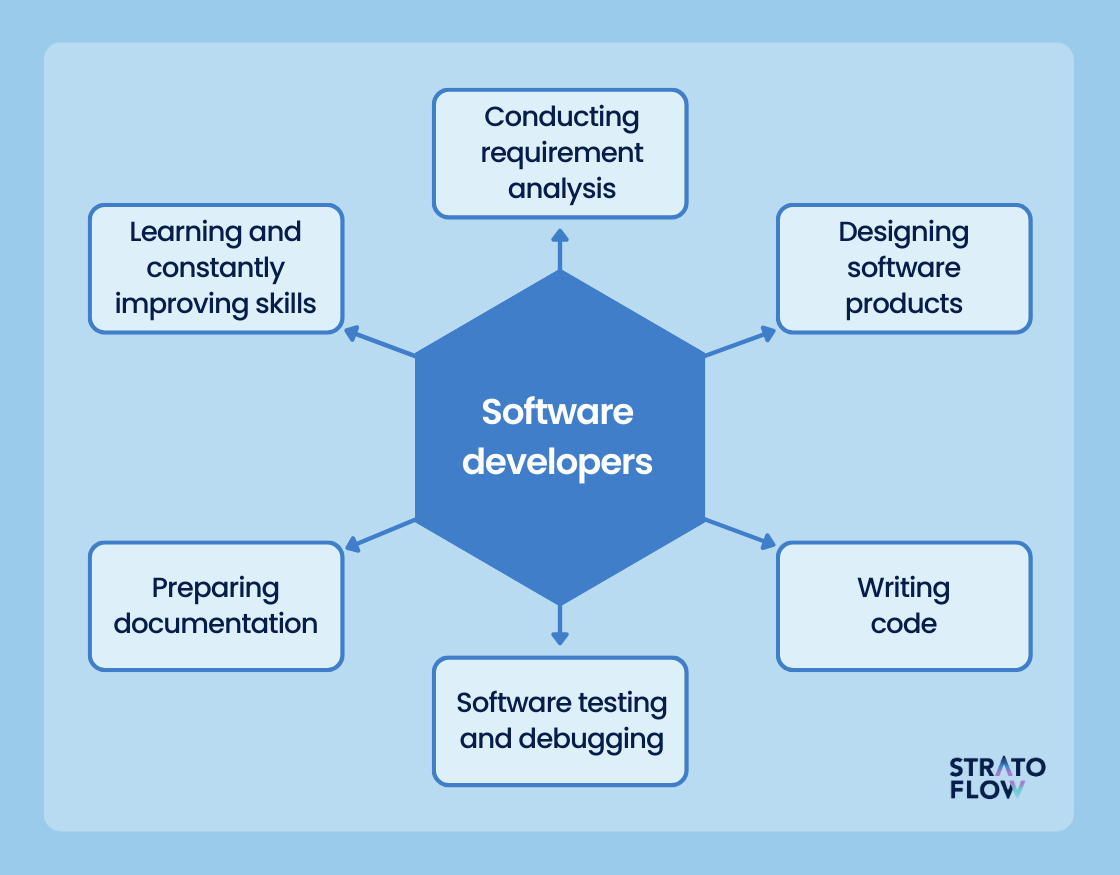Hire Dedicated Developers for Your Following Big Project with Confidence
Hire Dedicated Developers for Your Following Big Project with Confidence
Blog Article
Dedicated Developers vs. In-House Teams: Which Is Right for You?
The decision in between making use of devoted designers and keeping an internal group is a considerable one that can impact the trajectory of your jobs and total business strategy. Dedicated developers offer a degree of versatility and customized know-how that can be beneficial for certain, temporary initiatives. On the other hand, in-house teams add to a natural firm society and a nuanced understanding of long-term goals. By taking a look at essential variables such as spending plan, task extent, and wanted control, you can much better figure out which technique lines up with your organizational needs. The ramifications of this option extend past instant results-- consider the more comprehensive effect on your company landscape.
Recognizing Devoted Developers
The expanding demand for specialized abilities in the tech sector has brought about the introduction of devoted programmers as a feasible solution for lots of companies. These experts are generally gotten on a job basis, allowing business to utilize particular proficiency without the lasting dedication connected with permanent hires. Dedicated designers are frequently ingrained within a customer's team, offering adaptability and scalability to meet job needs.
This model enables companies to access a global skill swimming pool, which is particularly beneficial in a swiftly developing technical landscape. Dedicated designers can be sourced from different geographical areas, ensuring that business can find the ideal ability at competitive rates. They commonly bring a wealth of experience and knowledge, having serviced diverse projects across different markets.
Additionally, committed developers can focus exclusively on the tasks at hand, improving efficiency and effectiveness. They are furnished to incorporate effortlessly right into existing operations, teaming up very closely with internal teams to accomplish job objectives. This method not only reduces the burden of recruitment and training yet additionally enables organizations to remain nimble, adapting quickly to transforming market needs and technological developments.
Benefits of In-House Teams

Furthermore, internal teams have a tendency to have a much deeper understanding of the company's objective, worths, and goals. This positioning can boost employee interaction and inspiration, as staff member feel extra connected to their work and the organization's success. In addition, having a committed internal team enables much better alignment of techniques and goals, as these members are regularly concentrated on the firm's priorities.
In-house teams also assist in quicker decision-making processes, as they can react a lot more swiftly to changes and challenges. The well established partnerships and check my source knowledge with firm methods permit structured operations and lowered miscommunication. Ultimately, the combination of a natural society, placement with business objectives, and reliable interaction makes in-house teams an important possession for numerous organizations, particularly those looking to cultivate lasting development and advancement.
Expense Considerations
When assessing cost considerations, both in-house groups and committed programmers existing unique monetary effects for companies. Engaging dedicated programmers commonly includes a pay-per-project or hourly price design, which can be affordable for businesses with rising and fall job demands. This strategy permits flexibility in scaling sources up or down, making sure that companies just pay for the solutions they need.
On the other hand, internal teams involve fixed prices, including wages, benefits, and overhead expenditures such as office room and equipment. While this version provides greater control and instant availability of sources, it might cause greater long-lasting expenditures, especially if the work does not justify a permanent personnel.
Moreover, firms ought to consider the surprise expenses associated with recruitment and training of internal staff members, which can further strain budgets. In many cases, the moment and resources invested in managing an in-house group can take away from the company's core business objectives.

Job Administration and Flexibility
Task administration and adaptability are vital factors that influence the selection between internal teams and specialized programmers. Dedicated groups often have developed procedures for managing projects successfully, leveraging specific methodologies like Agile or Scrum, which assist in repetitive progression and adaptability.

Inevitably, the option between in-house groups and devoted programmers pivots on the desired degree of versatility and the certain task management needs. Business must review their operational characteristics, task complexity, and source accessibility to identify which alternative lines up ideal with their tactical purposes.
Making the Right Choice
Picking the best growth method-- internal groups spotify for developers or devoted programmers-- requires a cautious analysis of various aspects that straighten with a company's calculated objectives. dedicated development team. Initially, take into consideration the nature of the project. Committed developers may be much more appropriate if it requires specialized skills or a fast scale-up. Alternatively, in-house teams can offer much better connection and assimilation with existing employees.
Next, review your spending plan. Committed designers commonly offer a cost-effective solution for temporary tasks, while internal teams may incur greater lasting costs because of salaries, benefits, and expenses expenses. Evaluate the level of control and cooperation wanted; internal teams typically foster more powerful interaction and positioning with company society.
If immediate results are essential, dedicated designers can be onboarded swiftly, whereas building an in-house group takes time for employment and training. If continuous advancement is crucial, spending in an in-house team might produce better returns over time.
Verdict
In final thought, the decision in between devoted developers and internal teams hinges on task demands and business goals. Conversely, internal teams grow click resources a cohesive society and deeper placement with long-term objectives.
The decision in between utilizing committed designers and keeping an in-house group is a considerable one that can influence the trajectory of your tasks and total company technique.Job management and versatility are crucial variables that influence the option in between internal groups and devoted programmers. software development partner.In comparison, internal teams may succeed in maintaining a consistent job monitoring framework due to their familiarity with the organization's society and lasting goals. Devoted designers often present an economical remedy for short-term projects, while in-house teams may sustain greater lasting expenditures due to wages, benefits, and overhead expenses.In verdict, the choice in between in-house teams and devoted designers hinges on job demands and business goals
Report this page